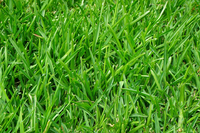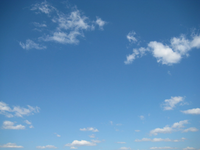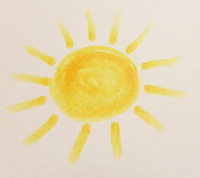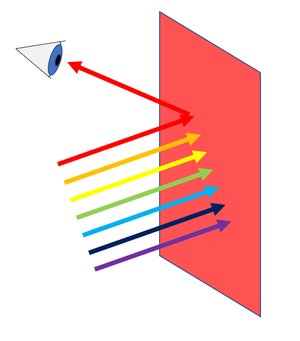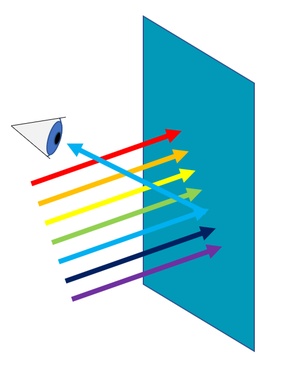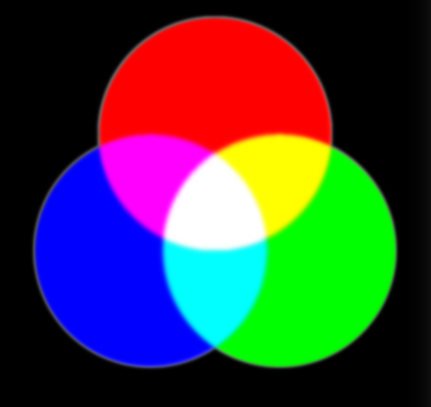Difference between revisions of "Colour"
(→Key Stage 3) |
(→Eyes and Colour) |
||
| Line 59: | Line 59: | ||
: If the red [[Cone (Biology)|cones]] and green [[Cone (Biology)|cones]] both detect [[light]] then we see [[yellow]]. | : If the red [[Cone (Biology)|cones]] and green [[Cone (Biology)|cones]] both detect [[light]] then we see [[yellow]]. | ||
: If the blue [[Cone (Biology)|cones]] and green [[Cone (Biology)|cones]] both detect [[light]] then we see [[cyan]]. | : If the blue [[Cone (Biology)|cones]] and green [[Cone (Biology)|cones]] both detect [[light]] then we see [[cyan]]. | ||
| + | |||
| + | ===Coloured Light=== | ||
| + | {| class="wikitable" | ||
| + | |- | ||
| + | |[[File:ColourMixing.png|center|500px]] | ||
| + | |- | ||
| + | | style="height:20px; width:200px; text-align:center;" | | ||
| + | : Magenta can be made by mixing red and blue [[light]]. | ||
| + | : Yellow can be made by mixing red and green [[light]]. | ||
| + | : Cyan can be made by mixing blue and green [[light]]. | ||
| + | : White can be made by mixing red, blue and green [[light]]. | ||
| + | |} | ||
| + | |||
| + | |||
| + | ===Colour Filters=== | ||
Revision as of 19:51, 21 October 2018
Contents
Key Stage 1
Meaning
Colour is something we see with our eyes.
About Colours
The colours we can see are red, orange, yellow, green, blue, indigo and violet. If you mix colours of paint together you can get another colour. Red and yellow paint mixed together makes orange. Blue and yellow paint mixed together make green. Blue and red paint mixed together makes purple. If you mix all three you can make brown.
Examples
| Grass is a green colour. | The colour of this rose is red. |
| The sky is blue in colour. | I will colour in the sun yellow with paint. |
Key Stage 3
Meaning
Colour is a property of objects that we can see.
About Colour
White light can be divided into 7 colours:
- Red
- Orange
- Yellow
- Green
- Blue
- Indigo
- Violet
- Red light has the lowest frequency and the longest wavelength.
- Violet light has the highest frequency and the shortest wavelength.
Colour and Objects
| A red object reflects red light but absorbs all the others colours. | A blue object reflects blue light but absorbs all the others colours. |
Eyes and Colour
- The human eyes only have three different colour sensing cells called cones. They can detect; red, green or blue light. All other colours we see are caused by a pair of different cones detecting light at the same time.
- If the red cones and blue cones both detect light then we see magenta.
- If the red cones and green cones both detect light then we see yellow.
- If the blue cones and green cones both detect light then we see cyan.
Coloured Light

